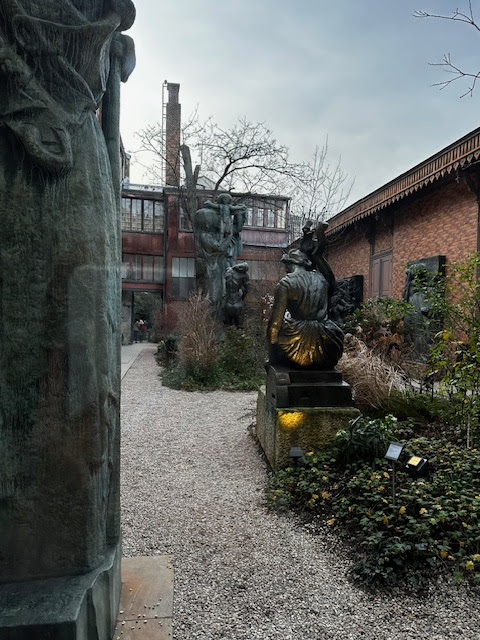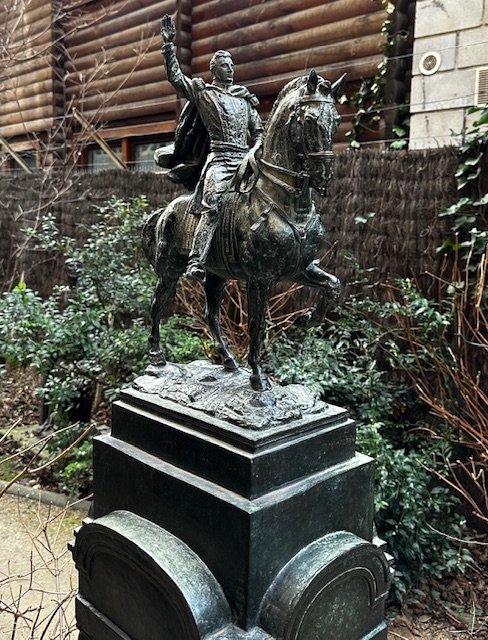Bourdelle Museum...
3:43 p.m.
14/05/24 - In Montparnasse, right at the number 18 of the street that bears his name, you will find the studio-house of Antoine Bourdelle (1861-1929), the sculptor of the great official commissions and monumental works, some of which are still preserved in the property's garden.
Bourdelle, born in Montauban, moved to Paris in 1885, precisely to this house that we are visiting today and that surprises us with the many visitors that walk through the rooms on a Wintery Saturday morning in Paris.
As soon as you enter the hall, a row of plaster casts leads to the inner garden where Dying Centaur dominates the entire scene. It is a monumental bronze piece whose figure has its head turned to the side and its right arm on a lyre. The torso is of classical anatomy and if we remember mythology a little, we associate the work with the myth of Chiron, when Hercules accidentally wounds this great friend of his who then obtains immortality. Behind the figure we see La Vierge á l’Offrande in which Bourdelle represents the Virgin holding her son as if he were an offering. Despite the rigidity and volume of the figure, the woman gracefully holds the child. If the Centaur was a classical sculpture, this one is medieval.
Up front: Dying Centaur, by Antoine Bourdelle (1911-1914)
Behind: La Vierge à l’Offrande (The Virgin of the Offering), by Antoine Bourdelle
Garden, Bourdelle Museum, Paris
Model for General Alvear's Monument, by Antoine Bourdelle (1915)
Material: Bronze
The Dying Centaur or The Wounded Centaur, Heracles Archer and The Equestrian Monument to Carlos María de Alvear belong to the collection of public and monumental sculpture of the city of Buenos Aires. It is said that the monument to Alvear, inaugurated in 1926, was considered by the artist himself as his masterpiece among great monuments.
Sculpture workshop
Penélope, bt Antoine Bourdelle (1909)
Material: plaster
In the sculpture workshop the artist's presence still remains alive. The light that penetrates through the window allows us to appreciate its ductility in all the possible materials that the 19th Century provided, such as marble, wood and bronze. The space witnessed creation and, despite the restorations, maintains that atmosphere of the last century. If the internal garden was used as a space for storing the monumental works, the sculpture atelier was the space for creation.
Bourdelle had the models he needed in his family. The first wife, Stéphanie Van Pays, posed for Penelope and Cléopâtre Bourdelle, the second, for The Virgin of the Offering. Thanks to the latter and her daughter, who donated his legacy, this museum allows us to meet a sculptor who opened the doors to modernity.












0 comentarios